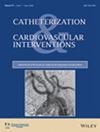Saline-Enhanced Optical Coherence Tomography (OCT) and Combined Orbital Atherectomy and Intravascular Lithotripsy in Complex Right Coronary Artery Stenosis With Chronic Kidney Disease
Abstract
Managing coronary artery disease (CAD) in patients with chronic kidney disease (CKD) poses significant challenges, particularly in reducing contrast volume to prevent worsening renal function. We present the case of a 67-year-old male with an initial presentation of inferior STEMI and 2:1 Mobitz Type II AV block, who underwent successful primary percutaneous coronary intervention (PPCI) for a thrombotic occlusion in the right coronary artery (RCA) then staged procedure for calcium modification and stenting. This report highlights two key aspects of the procedure: using saline instead of contrast for optical coherence tomography (OCT) to minimize contrast exposure, and and employing combination of orbital atherectomy followed by intravascular lithotripsy (IVL) for calcium modification in a heavily calcified lesion. The case underscores the importance of individualized procedural strategies to optimize outcomes in patients with complex coronary anatomy and comorbid CKD. In conclusion, using saline-enhanced OCT provides adequate imaging and helps to minimize contrast use to prevent kidney injury while the combined use of orbital atherectomy and IVL allowed for optimal calcium modification, enabling excellent stent deployment in a severely calcified coronary disease.

 求助内容:
求助内容: 应助结果提醒方式:
应助结果提醒方式:


